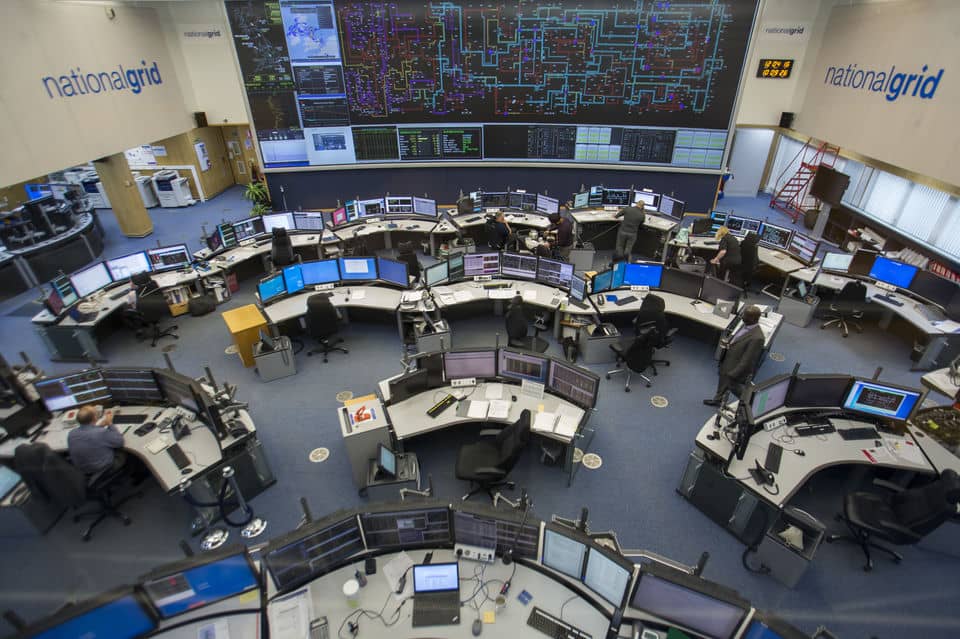On Friday 9 August 2019, there was a brief but widespread power cut across the UK, causing significant disruption to the train network. While an investigation is ongoing, there is already enough information to raise questions about the operation of the UK’s national grid and generation facilities.
What happened?
Just before 5pm, a technical issue at RWE’s Little Barford gas-fired power station caused it to go offline, resulting in the loss of 324MW of generation capacity. A few minutes later, Orsted’s Hornsea offshore wind farm also went offline, with a loss of up to 812MW.
The UK electricity demand at the time was 28,995MW, so the combined loss of up to 1,136MW of capacity represented just under 4% of demand at the time. As a result, the grid frequency (which is normally 50 Hz) dropped to below 48.9Hz (the lower acceptable limit is 49.5Hz). This resulted in automatic disconnection of some electricity demand to prevent the frequency falling further still.
What was supposed to happen?
As the frequency dropped, generators would have increased output, battery storage would have provided power, and commercial electricity users would have reduced demand. This would have provided a short-term response to the drop in frequency, and over time additional generators would have started up to provide ongoing supply.
A loss of 1,136MW is below the ‘normal infeed loss risk’ of 1,320MW that the UK’s grid is supposed to be able to cope with, but changes to the definition of this risk over recent years reduced the requirement to procure additional frequency response capacity, on the basis that this would save money for consumers.
What questions need to be asked?
The first question is why the loss of these two generators caused the frequency to drop so much. The inertia provided by nuclear, gas and coal generators has been reducing over the past decade, but this is not a surprise and frequency response services have been procured from energy storage providers such as Highview Power and demand response providers such as Open Energi. The question is whether a larger volume of these services should have been procured to provide greater resilience.
The second question is why the train network was so badly affected. Some responsibility lies with the train operators, as certain trains needed to be manually reset, but the priority of electricity supply to the rail network and availability of backup power for signalling should also be investigated.
The third question is whether smaller distributed generation also disconnected from the grid, as has happened in the past when the grid frequency has dropped suddenly. This is a safety feature, but if triggered unnecessarily then it can make a bad situation worse, and regulations have been updated to reduce the occurrence of this – the question is whether it was still a factor this time.
The final question is about the nature of our grid and generators. Until recently, the shift from fossil fuels to renewable energy was also a shift away from large centralised generators – this reduces some risks, as each small solar or wind farm has its own connection to the grid. But with the UK government’s ban on new onshore wind turbines, the focus has shifted to offshore wind farms, where economics of scale lead to large installations like Hornsea, which will be around 1,200 MW when complete – a similar size to a fossil fuel or nuclear generator.
Perhaps a renewed focus on distributed generation with many points of connection to the grid would reduce the risk of large single-point failures like the two that happened on 9 August?
This would work well with community energy projects, the like of which Ashden has awarded frequently in the past.
Update: 20 August 2019
National Grid has now published an interim report on the power cut, giving more detailed information. It seems that a lightning strike on the transmission network triggered the incident, but this is regarded as surprising as lightning strikes are a regular occurrence. Both Hornsea and Little Barford reduced their supply into the grid immediately after the lightning strike, and about 500MW of distributed generation also disconnected (which is as expected). Frequency response services kicked in, and stabilised the frequency, but then further power was lost from Little Barford as a direct result of the initial drop in output – this took the loss of generation to to 1,691 MW, which was more than the frequency response services available at the time could cope with, resulting in some automatic disconnection of demand. This new information answers some of the question posed above, but not all. A more detailed report from National Grid is due in September 2019.

